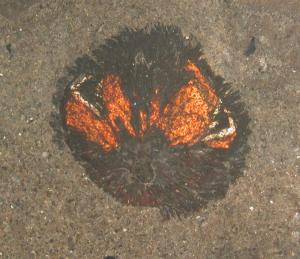Scientists from the Senckenberg Research Institute in Frankfurt have investigated the extensive collection of fruits and seeds from the Messel pit. They found 140 different plant species, 65 of which were previously unknown.
The results were published July 27 in the series “Abhandlungen der Senckenberg Gesellschaft für Naturforschung.” They show that Messel had one of the world’s most diverse floras of the Paleogene — the era between about 65 and 23 million years ago.
Dwarf-horses, the primate Ida and jewel beetles — the spectacular findings from the fossil site at Messel near Darmstadt are known worldwide. However, the plant fossils from Messel are also unique in their diversity. A team of scientists from the Senckenberg Research Institute in Frankfurt, the University of London and the Florida Museum of Natural History now provides an overview of the wealth of plant life 47 million years ago in a 250-page monograph.
Altogether the international team described 140 plant species from the collections of Senckenberg and the Hessian State Museum in Darmstadt. The seeds and fruits, as well as many leaves, flowers and pollen grains were recovered during excavations by both institutions in the previous decades but they had not been studied in detail before. “We have found numerous remains of a diversity of flowering plants and some conifers,” says Dr Volker Wilde, head of the palaeobotany section at the Senckenberg Research Institute in Frankfurt. “More than 60 types of plants could not be assigned to any known family — they are genuine new discoveries.”
Ten of the recently described families of flowering plants were previously unknown at Messel, three genera were even described for the first time for the Palaeogene. The monograph proves that Messel is one of the world’s richest sites for fossils of flowering plants.
“We are impressed not only by the large number of different plant families but also by the variety of dispersal strategies they had developed even at that time,” adds Wilde. Some developed wings on their seeds and relied on wind, some depended on animals to spread them, while others developed exploding capsules to scatter their seeds over a wide area.
“From the flora described we are also able to draw conclusions about the diet of animals 47 million years ago,” the Frankfurt palaeobotanist explains. “Fruits and seeds in the digestive tracts of vertebrates indicate that they were an important part of their food. Tiny holes in seeds also show that the famous Messel weevils also fed on certain plants.”
The flora is also ideal for reconstructing climatic and environmental conditions of the Paleogene. Having analysed around 30,000 plant remains, the scientists conclude that there was a warm tropical climate with slight seasonal variations. The palaeobotanists’ work therefore confirms the previous studies on the palaeoclimate at the time of the Messel lake.
“We believe the Messel lake was surrounded by a more or less tropical multi-storey rainforest, similar to those in areas with a comparable climate today. We also identified a high proportion of lianas and several marsh plants — virtually on our doorstep, it was a real jungle out there at Messel 47 million years ago,” says Wilde



 July 28th, 2012
July 28th, 2012  riffin
riffin 
 Posted in
Posted in 